 Big Finish Productions releases the 12th Dalek Empire audio drama, a Doctor Who audio spinoff starring David Tennant and William Gaunt.
Big Finish Productions releases the 12th Dalek Empire audio drama, a Doctor Who audio spinoff starring David Tennant and William Gaunt. ![]()

Earl Green is the creator, curator, and head writer of theLogBook.com.
 Big Finish Productions releases the 12th Dalek Empire audio drama, a Doctor Who audio spinoff starring David Tennant and William Gaunt.
Big Finish Productions releases the 12th Dalek Empire audio drama, a Doctor Who audio spinoff starring David Tennant and William Gaunt. ![]()
 The Christine McVie CD In The Meantime is released.
The Christine McVie CD In The Meantime is released. ![]()
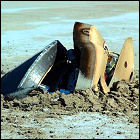 The NASA/JPL Genesis mission, a 29-month trek through the solar system to gather solar particles and return them to Earth, ends in disaster when both of the parachutes – meant to slow the returning Genesis capsule down and give retrieval helicopters something to hook onto to bring the capsule to the ground safely – fail to open. As a result, the 420+ pound Genesis capsule slams into the Utah desert floor at nearly 200 miles per hour. The impact breaches not only the outer re-entry shell of the capsule, but the experiment canister within containing the fragile plates of gold, sapphire, diamond and other pure substances, all of which had been exposed to the solar wind to collect particles from the sun. Scientists begin picking through the debris to see what portions of those collection devices can be salvaged. Several pieces of the collection devices are salvageable, with at least two complete plates and fragments of several others, but many other plates are reduced to dust by the impact of landing.
The NASA/JPL Genesis mission, a 29-month trek through the solar system to gather solar particles and return them to Earth, ends in disaster when both of the parachutes – meant to slow the returning Genesis capsule down and give retrieval helicopters something to hook onto to bring the capsule to the ground safely – fail to open. As a result, the 420+ pound Genesis capsule slams into the Utah desert floor at nearly 200 miles per hour. The impact breaches not only the outer re-entry shell of the capsule, but the experiment canister within containing the fragile plates of gold, sapphire, diamond and other pure substances, all of which had been exposed to the solar wind to collect particles from the sun. Scientists begin picking through the debris to see what portions of those collection devices can be salvaged. Several pieces of the collection devices are salvageable, with at least two complete plates and fragments of several others, but many other plates are reduced to dust by the impact of landing.
 The 162nd episode of Stargate SG-1 airs on the Sci-Fi Channel, starring Richard Dean Anderson, Amanda Tapping, Michael Shanks, and Christopher Judge.
The 162nd episode of Stargate SG-1 airs on the Sci-Fi Channel, starring Richard Dean Anderson, Amanda Tapping, Michael Shanks, and Christopher Judge.
More about Stargate SG-1 in the LogBook and theLogBook.com Store
Stargate SG-1 now streaming on Amazon Prime
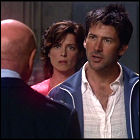 Sci-Fi Channel airs the eighth episode of Stargate Atlantis. Don S. Davis (Stargate SG-1) guest stars.
Sci-Fi Channel airs the eighth episode of Stargate Atlantis. Don S. Davis (Stargate SG-1) guest stars. ![]()
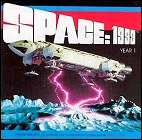 The soundtrack CD Space: 1999 Year One is released – five years to the day after the date the moon is blasted out of orbit, according to the series’ opening credits.
The soundtrack CD Space: 1999 Year One is released – five years to the day after the date the moon is blasted out of orbit, according to the series’ opening credits. ![]()
 The 163rd episode of Stargate SG-1 airs on the Sci-Fi Channel, starring Richard Dean Anderson, Amanda Tapping, Michael Shanks, and Christopher Judge.
The 163rd episode of Stargate SG-1 airs on the Sci-Fi Channel, starring Richard Dean Anderson, Amanda Tapping, Michael Shanks, and Christopher Judge.
More about Stargate SG-1 in the LogBook and theLogBook.com Store
Stargate SG-1 now streaming on Amazon Prime
 Sci-Fi Channel airs the ninth episode of Stargate Atlantis. Colm Meaney and Robert Davi guest star. This is the first half of a cliffhanger which is resolved in January.
Sci-Fi Channel airs the ninth episode of Stargate Atlantis. Colm Meaney and Robert Davi guest star. This is the first half of a cliffhanger which is resolved in January. ![]()
 The 13th episode of the radio science fiction comedy series The Hitchhiker’s Guide To The Galaxy is first broadcast on BBC Radio, beginning a radio adaptation of Douglas Adams’ novel Life, The Universe, And Everything and reuniting most of the original radio cast (though even the late Peter Jones is represented via brief clips from the 1970s radio series before being “rebooted” to the voice of actor William Franklyn). Adapted by Dirk Maggs, this is the first Hitchhiker’s Guide radio project undertaken after Adams’ death in 2001. Toby Longworth guest stars.
The 13th episode of the radio science fiction comedy series The Hitchhiker’s Guide To The Galaxy is first broadcast on BBC Radio, beginning a radio adaptation of Douglas Adams’ novel Life, The Universe, And Everything and reuniting most of the original radio cast (though even the late Peter Jones is represented via brief clips from the 1970s radio series before being “rebooted” to the voice of actor William Franklyn). Adapted by Dirk Maggs, this is the first Hitchhiker’s Guide radio project undertaken after Adams’ death in 2001. Toby Longworth guest stars. ![]()
 Columbia Records Japan releases Bob Sakuma’s soundtrack from the early ’70s Tatsunoko anime series Space Knight Tekkaman .
Columbia Records Japan releases Bob Sakuma’s soundtrack from the early ’70s Tatsunoko anime series Space Knight Tekkaman . ![]()
 The 14th episode of the radio science fiction comedy series The Hitchhiker’s Guide To The Galaxy is broadcast on BBC Radio, continuing Dirk Maggs’ adaptation of Douglas Adams’ novel Life, The Universe, And Everything with most of the original radio cast. Real-life BBC cricket commentators Henry Blofeld and Henry Trueman appear as themselves.
The 14th episode of the radio science fiction comedy series The Hitchhiker’s Guide To The Galaxy is broadcast on BBC Radio, continuing Dirk Maggs’ adaptation of Douglas Adams’ novel Life, The Universe, And Everything with most of the original radio cast. Real-life BBC cricket commentators Henry Blofeld and Henry Trueman appear as themselves. ![]()
 The Brian Wilson album Smile, based on songs and concepts from an unfinished Beach Boys album, is released.
The Brian Wilson album Smile, based on songs and concepts from an unfinished Beach Boys album, is released. ![]()
 The soundtrack of the 1967 movie OK Connery is released, with music by Bruno Nicolai and Ennio Morricone. The movie is better known to fans of Mystery Science Theater 3000 as Operation Double 007.
The soundtrack of the 1967 movie OK Connery is released, with music by Bruno Nicolai and Ennio Morricone. The movie is better known to fans of Mystery Science Theater 3000 as Operation Double 007. ![]()
 The first qualifying flight for the Ansari X Prize becomes a dangerous one for pilot Mike Melvill, as the experimental spacecraft SpaceShip One begins a rapid roll after its rocket engine ignites, sending the vehicle on a twisty trajectory into suborbital space. The vehicle reaches just under Mach 3, and still passes the altitude of 100 kilometers necessary to be considered a space flight (and to be considered a contender for the X Prize), but SpaceShip One must repeat the feat to win the $10,000,000 prize for launching the first privately funded spacecraft.
The first qualifying flight for the Ansari X Prize becomes a dangerous one for pilot Mike Melvill, as the experimental spacecraft SpaceShip One begins a rapid roll after its rocket engine ignites, sending the vehicle on a twisty trajectory into suborbital space. The vehicle reaches just under Mach 3, and still passes the altitude of 100 kilometers necessary to be considered a space flight (and to be considered a contender for the X Prize), but SpaceShip One must repeat the feat to win the $10,000,000 prize for launching the first privately funded spacecraft.
 Big Finish Productions releases the 13th Dalek Empire audio drama, a Doctor Who audio spinoff starring David Tennant and William Gaunt.
Big Finish Productions releases the 13th Dalek Empire audio drama, a Doctor Who audio spinoff starring David Tennant and William Gaunt. ![]()
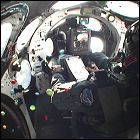 Privately-owned experimental space vehicle SpaceShip One makes its second qualifying flight into suborbital space, exceeding Mach 3 (the first privately owned vehicle to do so) and reaching an altitude of 112 kilometers. Brian Binnie pilots SpaceShip One for its third trip into space and earns the second set of FAA commercial astronaut wings as a result. A fourth trip is considered, but then cancelled to avoid any damage to the history-making vehicle. By this point, Virgin has already hired SpaceShip One designer Burt Rutan to build SpaceShip Two, a suborbtial passenger spacecraft which will take paying customers into space as part of the company’s “Virgin Galactic” service, based on the design of SpaceShip One. Rutan and investor (and Microsoft co-founder) Paul Allen also claim the $10,000,000 Ansari X Prize.
Privately-owned experimental space vehicle SpaceShip One makes its second qualifying flight into suborbital space, exceeding Mach 3 (the first privately owned vehicle to do so) and reaching an altitude of 112 kilometers. Brian Binnie pilots SpaceShip One for its third trip into space and earns the second set of FAA commercial astronaut wings as a result. A fourth trip is considered, but then cancelled to avoid any damage to the history-making vehicle. By this point, Virgin has already hired SpaceShip One designer Burt Rutan to build SpaceShip Two, a suborbtial passenger spacecraft which will take paying customers into space as part of the company’s “Virgin Galactic” service, based on the design of SpaceShip One. Rutan and investor (and Microsoft co-founder) Paul Allen also claim the $10,000,000 Ansari X Prize.
 The 15th episode of the radio science fiction comedy series The Hitchhiker’s Guide To The Galaxy is broadcast on BBC Radio, continuing Dirk Maggs’ adaptation of Douglas Adams’ novel Life, The Universe, And Everything with most of the original radio cast. An archival audiobook recording of the late Douglas Adams allows the Hitchhiker’s Guide creator to play the part of Agrajag.
The 15th episode of the radio science fiction comedy series The Hitchhiker’s Guide To The Galaxy is broadcast on BBC Radio, continuing Dirk Maggs’ adaptation of Douglas Adams’ novel Life, The Universe, And Everything with most of the original radio cast. An archival audiobook recording of the late Douglas Adams allows the Hitchhiker’s Guide creator to play the part of Agrajag. ![]()
 The R.E.M. album Around the Sun is released, featuring the single “Leaving New York”.
The R.E.M. album Around the Sun is released, featuring the single “Leaving New York”. ![]()
 The William Shatner CD Has Been is released, featuring guest appearances by Brad Paisley, Henry Rollins and Ben Folds.
The William Shatner CD Has Been is released, featuring guest appearances by Brad Paisley, Henry Rollins and Ben Folds. ![]()
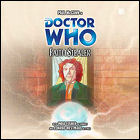 Big Finish Productions releases the 61st Doctor Who audio drama in its main monthly range, starring Paul McGann and India Fisher.
Big Finish Productions releases the 61st Doctor Who audio drama in its main monthly range, starring Paul McGann and India Fisher. ![]()
 The internet-based fan film Star Trek: Phase II releases its second full-length episode, In Harm’s Way. William Windom, Malachi Throne and BarBara Luna guest star.
The internet-based fan film Star Trek: Phase II releases its second full-length episode, In Harm’s Way. William Windom, Malachi Throne and BarBara Luna guest star. ![]()
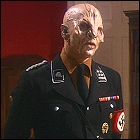 The 76th episode of the prequel spinoff Star Trek: Enterprise airs on UPN, opening the series’ fourth season.
The 76th episode of the prequel spinoff Star Trek: Enterprise airs on UPN, opening the series’ fourth season. ![]()
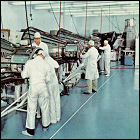 Dr. Maxime “Max” Faget, one of NASA’s original employees dating back to the Space Task Group, dies at the age of 83. In 1946, he joined Langley Research Center where he contributed to pilotless aircraft research and became head of the center’s performance aerodynamics division. In 1958, he designed the original Mercury space capsule as a member of NASA’s Space Task Group, charged with finding ways to help America lead in the cold-war-era space race. He was one of the chief architects of the basic mission design for the Apollo lunar program. He was responsible for designing or contributing to the design of every U.S. manned spacecraft from Mercury through the shuttle, and retired from NASA in 1981 following the second flight of the shuttle Columbia. In 1982, he was a founding member of Space Industries, a company which designed experiments which were flown aboard the shuttle. He held patents on the Mercury capsule itself, as well as the vehicle’s escape tower and “survival couch.” He is survived by four children and their families.
Dr. Maxime “Max” Faget, one of NASA’s original employees dating back to the Space Task Group, dies at the age of 83. In 1946, he joined Langley Research Center where he contributed to pilotless aircraft research and became head of the center’s performance aerodynamics division. In 1958, he designed the original Mercury space capsule as a member of NASA’s Space Task Group, charged with finding ways to help America lead in the cold-war-era space race. He was one of the chief architects of the basic mission design for the Apollo lunar program. He was responsible for designing or contributing to the design of every U.S. manned spacecraft from Mercury through the shuttle, and retired from NASA in 1981 following the second flight of the shuttle Columbia. In 1982, he was a founding member of Space Industries, a company which designed experiments which were flown aboard the shuttle. He held patents on the Mercury capsule itself, as well as the vehicle’s escape tower and “survival couch.” He is survived by four children and their families.
 The man who went from an unknown actor to man of steel to activist, Christopher Reeve dies at the age of 52 after falling into a coma a day earlier. He was best known to most as the star of 1978’s Superman and its three sequels, but he also distinguished himself with roles in other films such as Somewhere In Time. He was picky with his roles, turning down the lead parts in such films as The Running Man, Total Recall and American Gigolo. In 1995, he was paralyzed from the neck down after being thrown from a horse, and he took on a new role of a tireless campaigner for spinal injury research (and, more recently, stem cell research). He had recently been seen in the recurring role of the mysterious Dr. Swann in the TV series Smallville.
The man who went from an unknown actor to man of steel to activist, Christopher Reeve dies at the age of 52 after falling into a coma a day earlier. He was best known to most as the star of 1978’s Superman and its three sequels, but he also distinguished himself with roles in other films such as Somewhere In Time. He was picky with his roles, turning down the lead parts in such films as The Running Man, Total Recall and American Gigolo. In 1995, he was paralyzed from the neck down after being thrown from a horse, and he took on a new role of a tireless campaigner for spinal injury research (and, more recently, stem cell research). He had recently been seen in the recurring role of the mysterious Dr. Swann in the TV series Smallville.
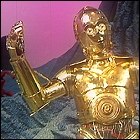
 Carnie Mellon University inducts five new members to its Robot Hall Of Fame at a press event promoting the movie adaptation of Isaac Asimov’s I, Robot. The 2004 inductees, again split almost evenly between fictional and real robots, are:
Carnie Mellon University inducts five new members to its Robot Hall Of Fame at a press event promoting the movie adaptation of Isaac Asimov’s I, Robot. The 2004 inductees, again split almost evenly between fictional and real robots, are:
Judges for the 2004 Hall include SimCity creator Wil Wright, roboticist Ruzena Bajcsy and Apple co-founder Steve Wozniak.
 The 16th episode of the radio science fiction comedy series The Hitchhiker’s Guide To The Galaxy is broadcast on BBC Radio, continuing Dirk Maggs’ adaptation of Douglas Adams’ novel Life, The Universe, And Everything with most of the original radio cast. An archival audiobook recording of the late Douglas Adams allows the Hitchhiker’s Guide creator to play the part of Agrajag; Joanna Lumley (Sapphire & Steel, Absolutely Fabulous) also guest stars.
The 16th episode of the radio science fiction comedy series The Hitchhiker’s Guide To The Galaxy is broadcast on BBC Radio, continuing Dirk Maggs’ adaptation of Douglas Adams’ novel Life, The Universe, And Everything with most of the original radio cast. An archival audiobook recording of the late Douglas Adams allows the Hitchhiker’s Guide creator to play the part of Agrajag; Joanna Lumley (Sapphire & Steel, Absolutely Fabulous) also guest stars. ![]()
 The Duran Duran CD Astronaut is released.
The Duran Duran CD Astronaut is released. ![]()
 The tenth full-time crew of the International Space Station lifts off from Russia’s Baikonur Cosmodrome aboard Soyuz TMA-5. Salizhan Sharipov and Leroy Chiao take up residence on the ISS for 192 days. Arriving with them on the ISS for a nine-day stay is cosmonaut Yuri Shargin, who returns to Earth aboard Soyuz TMA-4 with the Expedition 9 crew.
The tenth full-time crew of the International Space Station lifts off from Russia’s Baikonur Cosmodrome aboard Soyuz TMA-5. Salizhan Sharipov and Leroy Chiao take up residence on the ISS for 192 days. Arriving with them on the ISS for a nine-day stay is cosmonaut Yuri Shargin, who returns to Earth aboard Soyuz TMA-4 with the Expedition 9 crew.
 The 77th episode of the prequel spinoff Star Trek: Enterprise airs on UPN, concluding the opening two-parter.
The 77th episode of the prequel spinoff Star Trek: Enterprise airs on UPN, concluding the opening two-parter. ![]()
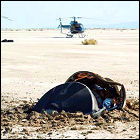 A week after the Genesis sample return mission tumbled back to Earth, slamming into the Utah desert floor at nearly 200 miles per hour after its parachutes failed to open, investigators find a likely cause of the crash. It appears that four gravity-sensitive switches, designed to sense the sudden deceleration of the Genesis capsule through Earth’s atmosphere and set off a timed sequence that would’ve opened the parachutes, had all been installed backwards. The four switches were designed to be redundant, so that if some failed the others could still carry out their assigned task…but this doesn’t do a lot of good if all of them are all installed incorrrectly. The investigation indicates that an erroneous schematic diagram of Genesis may be to blame. In the meantime, researchers begin to examine the surviving chunks of the broken collector plates containing particles of solar material.
A week after the Genesis sample return mission tumbled back to Earth, slamming into the Utah desert floor at nearly 200 miles per hour after its parachutes failed to open, investigators find a likely cause of the crash. It appears that four gravity-sensitive switches, designed to sense the sudden deceleration of the Genesis capsule through Earth’s atmosphere and set off a timed sequence that would’ve opened the parachutes, had all been installed backwards. The four switches were designed to be redundant, so that if some failed the others could still carry out their assigned task…but this doesn’t do a lot of good if all of them are all installed incorrrectly. The investigation indicates that an erroneous schematic diagram of Genesis may be to blame. In the meantime, researchers begin to examine the surviving chunks of the broken collector plates containing particles of solar material.